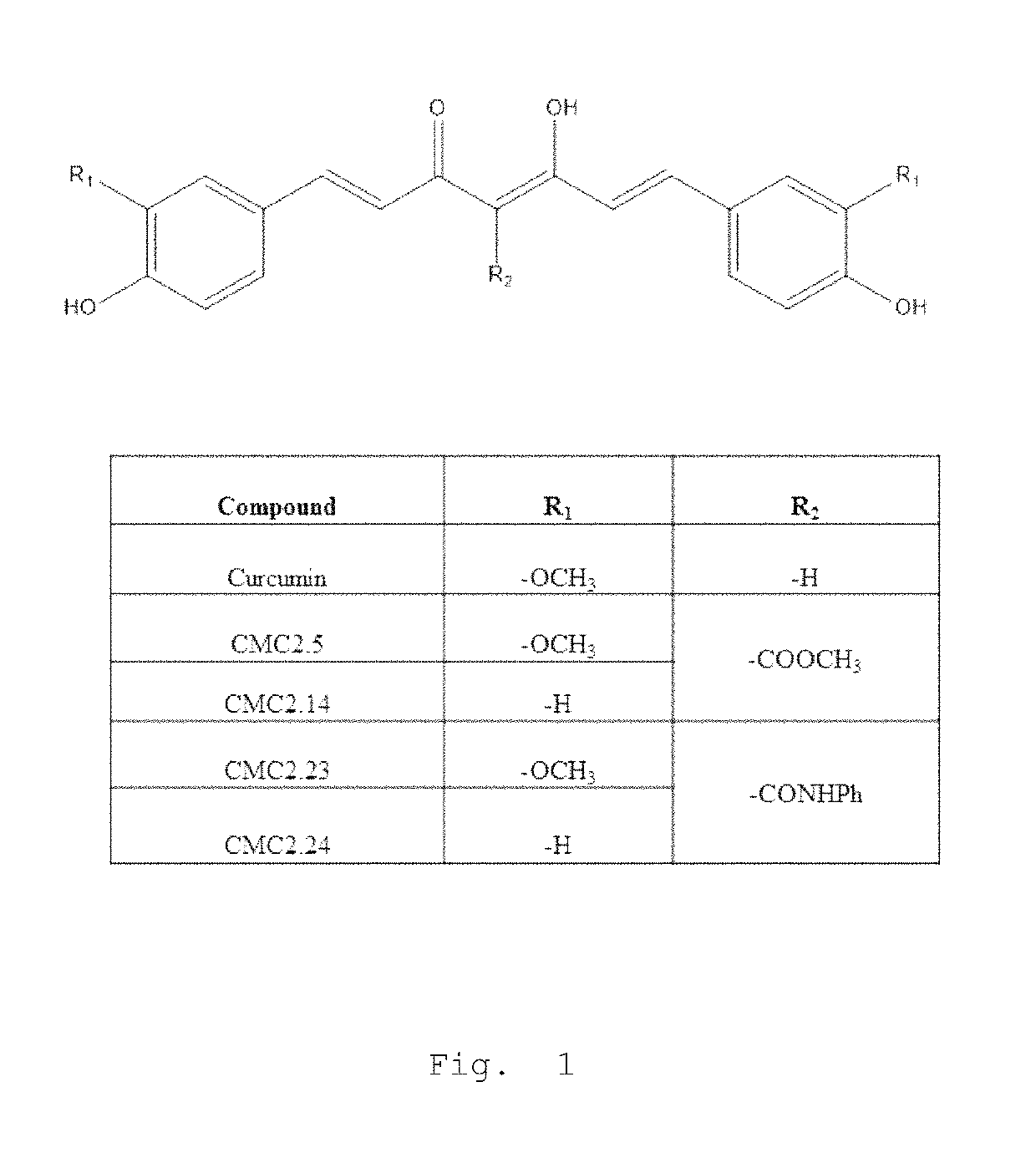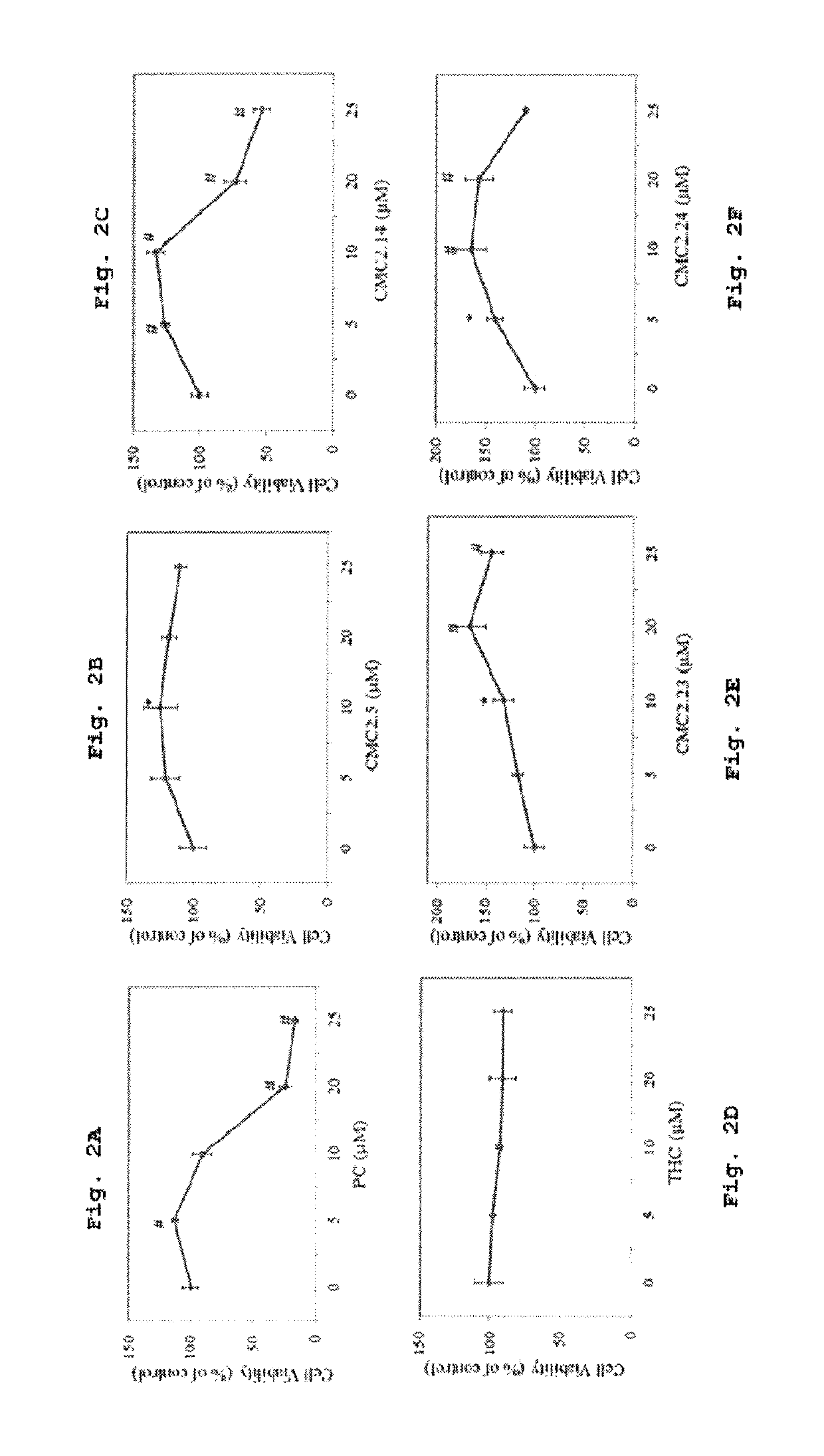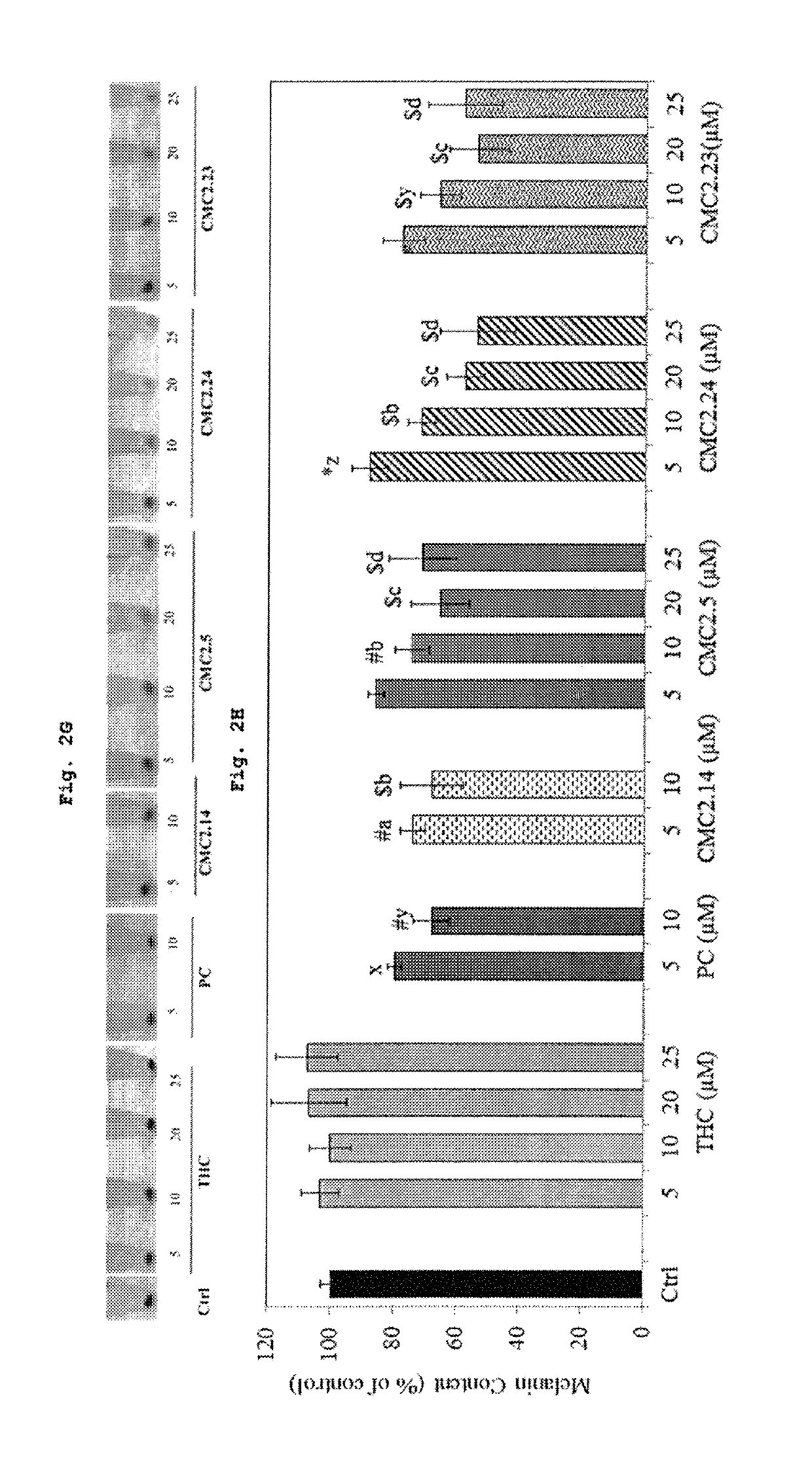Inhibition of melanogenesis by chemically modified curcumins
a technology of curcumins and curcumins, which is applied in the field of inhibition of melanogenesis by chemically modified curcumins, can solve the problems of poor oral absorption and lack, significant psychosocial burden, and use as a medicinal substan
- Summary
- Abstract
- Description
- Claims
- Application Information
AI Technical Summary
Benefits of technology
Problems solved by technology
Method used
Image
Examples
example 1
Compounds on Cytotoxicity in B16F10 Cells
[0328]MTS assay was conducted to screen the compounds (PC, THC and CMCs) for cytotoxicity and only select nontoxic ones to be further used for melanogenesis study. PC and CMC2.14 caused significant cytotoxicity at 20 and 25 μM. The mean value of cell viability was 24.44% and 16.55% for PC at 20 μM and 25 uM, respectively (FIG. 1A) while it was 73.31% and 53.6% for CMC2.14 (FIG. 1C). All the compounds with the exception of THC stimulated cell proliferation significantly at lower doses. For example, CMC 2.14 at 5 μM caused increase of 26.2% (p<0.01) and CMC2.24 caused increase of 40.7% (p<0.05) while PC at 5 μM also stimulated by 13% (p<0.05). CMC2.24 showed the maximal proliferative response out of the 4 derivatives. Overall, PC was found to be most cytotoxic. Based on the results, PC and CMC2.14 were used for further cellular studies at 5 and 10 μM only and THC, CMC2.14, CMC2.5, CMC2.24 and CMC2.23 were used in range 5-25 μM.
example 2
Compounds on Melanin Synthesis in B16F10 Cells
[0329]Melanin content was estimated in cell pellets to study effects of compounds on inhibition of melanogenesis. FIG. 2H shows the results of the melanin contents of B16F10 cells treated with compounds (PC, THC, CMCs) for 48 hours. The panel (FIG. 2G) shows the cell pellets visibly lightening in case of CMC2.24 and CMC2.23 dose-dependently more than other groups and the melanin content estimation also showed that CMC2.24 and CMC2.23 showed the most potent inhibition. THC unexpectedly increased melanin content marginally (p>0.05) unlike PC which decreased it which indicates that the double bond conjugation in curcumin is critical for antimelanogenic activity; this activity is apparently lost upon removal of double bond conjugation to form THC. The levels of inhibition obtained by PC at 10 μM (32.14%) was similar to CMC2.5 at 20 μM (34.59%) and CMC2.14 at 10 μM (32.21%) (FIG. 2H, p<0.001). Higher inhibition of 46.4% was achieved by CMC2.2...
example 3
Compounds on Mushroom Tyrosinase Activity in Cell-Free System
[0330]As tyrosinase is the primary rate-limiting enzyme in melanogenesis pathway, we studied if the compounds inhibited melanin in part due to inhibition of tyrosinase. Mushroom tyrosinase activity was tested to screen the compounds to identify if the compounds had any direct inhibitory effect of the tyrosinase enzyme using L-DOPA as substrate. FIG. 3A shows the results of the tyrosinase activity treated with compounds (PC, THC, CMCs). Based on the results, CMC2.24 exhibited the greatest inhibitory activity with observed percentage inhibition of 35.4% at 20 and 38.2% at 25 μM which was significantly different from control and significant (p<0.001) as compared to PC. The other CMCs (2.23, 2.14 and 2.5) showed moderate inhibition which was similar across all the concentrations tested There was no significant difference between the observed extents of inhibition by similar concentrations of the compounds.
PUM
| Property | Measurement | Unit |
|---|---|---|
| pH | aaaaa | aaaaa |
| concentration | aaaaa | aaaaa |
| pH | aaaaa | aaaaa |
Abstract
Description
Claims
Application Information
 Login to View More
Login to View More - Generate Ideas
- Intellectual Property
- Life Sciences
- Materials
- Tech Scout
- Unparalleled Data Quality
- Higher Quality Content
- 60% Fewer Hallucinations
Browse by: Latest US Patents, China's latest patents, Technical Efficacy Thesaurus, Application Domain, Technology Topic, Popular Technical Reports.
© 2025 PatSnap. All rights reserved.Legal|Privacy policy|Modern Slavery Act Transparency Statement|Sitemap|About US| Contact US: help@patsnap.com



